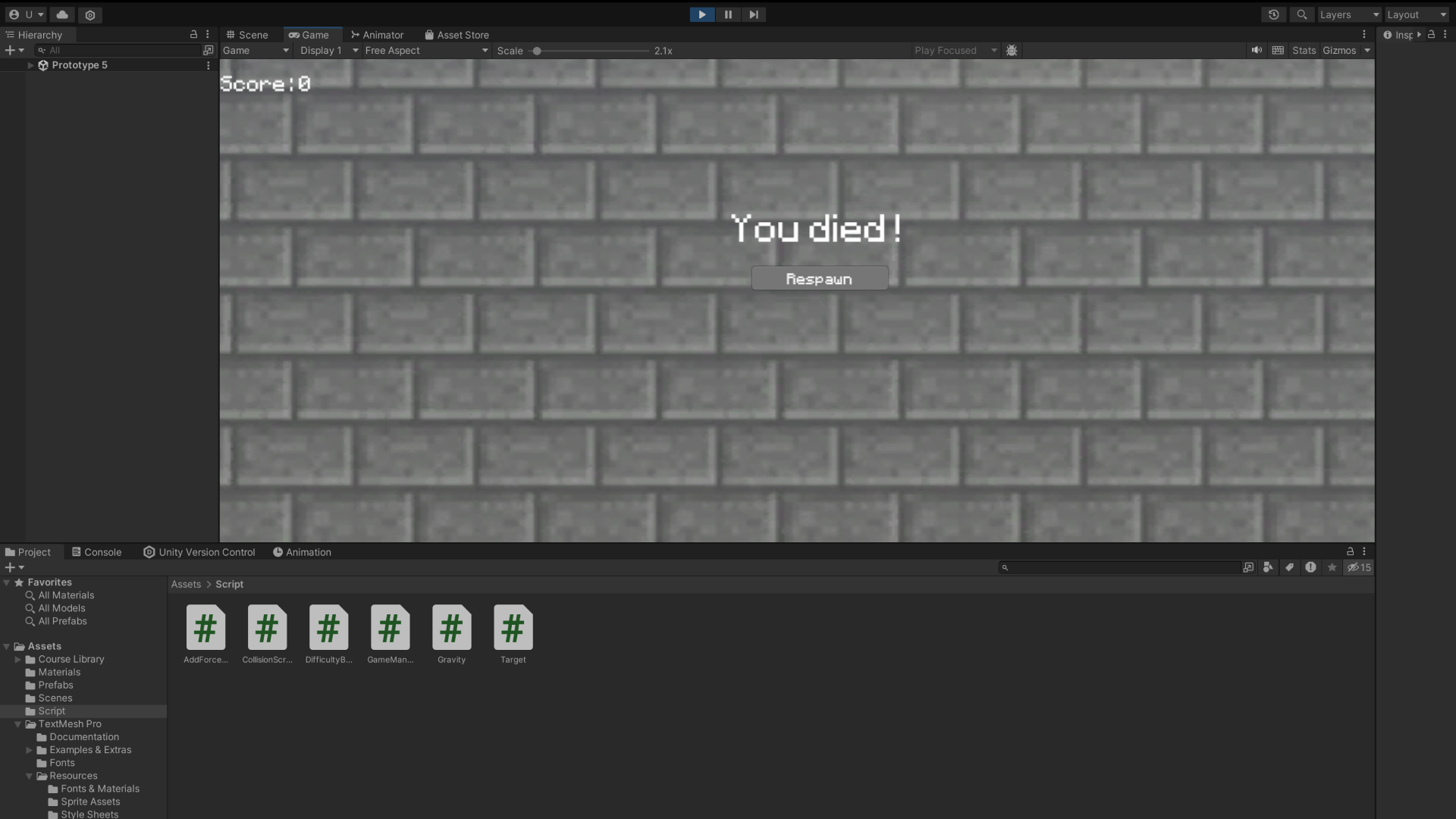OBJECT COLLECTOR GAME
Unity Interactive Systems
1 septembre 2024
Context & Objectives
This project was developed as part of the Interactive Systems module in the BUT Métiers du Multimédia et de l’Internet (MMI) program at IUT de Lannion. The course focused on designing reliable, modular, and user-centered interactive systems. Our objective was to create a Unity-based game where the player interacts with randomly spawned objects—some rewarding points, others causing penalties.
Key objectives included:
• Building interactive game elements with 2D/3D assets • Understanding Unity physics: gravity, force application, and collision detection • Creating an interactive interface using Unity's Canvas system • Applying C# scripting for object behavior and gameplay logic
Aesthetic Design Choices
The visual direction of the game was heavily inspired by Minecraft’s pixelated and blocky aesthetic. All game objects were modeled as cubes, and the interface used a Minecraft-like typeface for the score display and buttons, creating a consistent retro-inspired theme.
Production & Completed Work
Unity Physics
• Implemented gravity, forces, and collision detection using custom scripts
• Used physics methods like AddForce, Impulse, and VelocityChange to simulate realistic object behavior
Game Design • Developed the Object Collector Game using Unity’s physics engine • Designed both positive and negative target objects in a cube-based Minecraft style
UI Development • Built a dynamic score display using TextMeshPro and pixel fonts • Created a Game Over screen and a Restart button styled to match the overall blocky design
Game Management • Developed a GameManager.cs script to manage overall gameplay: spawning objects, score tracking, difficulty scaling
Skills Developed
Acquired • Solid understanding of Unity’s core components: Rigidbody physics, collision systems, and Canvas-based UI
Developed • Proficiency in C# scripting for behavior management and interaction logic • Game flow orchestration: controlling object spawn, player input, game state transitions
Applied • Asset management: structured use of prefabs, textures, and particles • User experience design: implemented accessible UI components (score display, feedback, restart logic)

Outcome & Lessons Learned
This project greatly improved my understanding of interactive system design using Unity. It allowed me to explore everything from physics and interface development to visual theming and gameplay structure.
The consistent integration of a Minecraft-inspired visual identity helped enhance both the playability and aesthetic coherence of the game.
Overall, this hands-on experience deepened my skills in user-centered interactive system design, and offered an excellent application of the technical and creative approaches taught in the Interactive Systems module of the BUT MMI program.